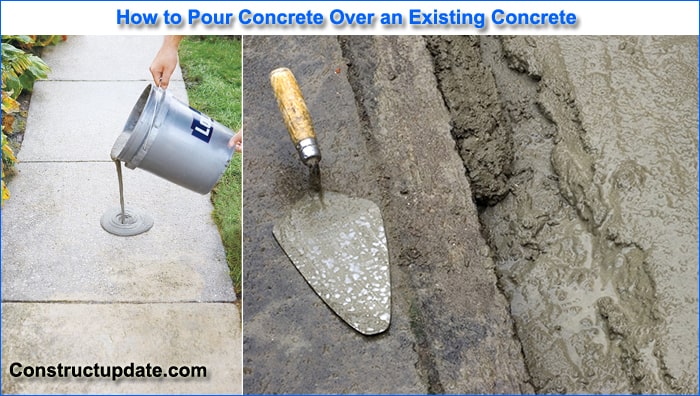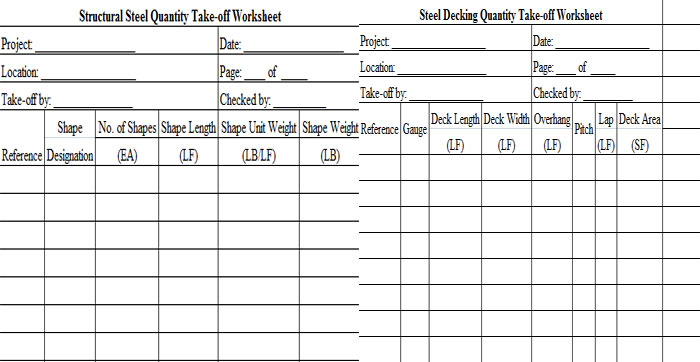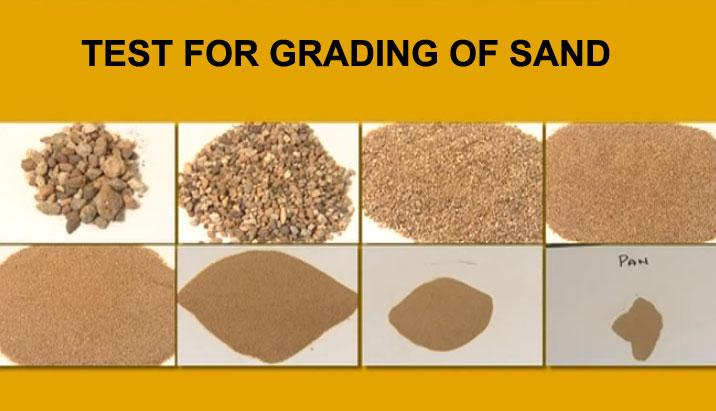Pouring Concrete Over Concrete | Methods of Concrete Pouring over Old Concrete
You might question if you can simply pour fresh concrete on top of an existing layer of concrete while renovating your driveway or backyard deck. Even if you believe you understand concrete and how it functions, there are several factors to take into account before choosing this course of action.
Old concrete can be covered with new concrete. However, issues with your old concrete, such as cracks or frost heaves, will transfer to your new concrete if they are not corrected. Additionally, you have to pour it until it is at least 2 inches thick. No of the situation, pouring new concrete can be more difficult than expected if you’re not attentive. Having stated that, before working with new concrete joining existing concrete, you must be knowledgeable in your field.

Can I Pour Concrete Over Concrete?
Is it OK to pour concrete on top of concrete? When you made the decision to pour concrete over the previous concrete surface, this thought might have crossed your mind. You should always check the condition of your current slab before pouring a fresh layer of concrete on top of your prior one.
Before pouring the new layer, any flaws in the existing concrete must be fixed if they indicate deterioration. An ancient concrete slab may have new concrete added to it if it is still in good condition.
Before pouring the new concrete, thoroughly clean the surface of the old concrete and apply the proper concrete bonding agent to ensure that the overall structural requirements are met.
Although it is feasible to use old concrete as a foundation for new concrete, a number of factors will determine if your old concrete is sturdy enough to hold a fresh batch. By placing a new concrete slab on top, the cracks, frost heaves, discoloration, degradation, and slab that has sunk to different uneven levels cannot be repaired.
Any issue that severely compromises the structural integrity of a preceding layer of concrete could also severely compromise a newly poured surface. Before concrete can be poured on top of the old layer of materials, both of those conditions must be met.
How thinly can concrete be poured on top of concrete?
The thickness of your new layer must be at least 2 inches. Any thinner than that risks readily cracking under pressure and failing to properly adhere to your surface.
How to Pour Concrete Over an Existing Concrete Slab in Steps
When beginning a significant building project, it is preferable to seek expert counsel. This will ensure a solid and durable bond between the fresh and old concrete.
Pour concrete over existing concrete by following these directions.
Cleaning Old Concrete Surface
This is a crucial action to do. Before pouring new concrete on top of old concrete, the area must be properly prepped. Among the things to be removed are gravel, leaves, and sand. One of the better tools for getting all the dirt out of crevices is the stiff-bristle brush. Make sure there is no dirt, grease, or dust on the surface before applying the new coat. Start by dusting and washing the existing concrete to get rid of any debris.
Setting Up Slab Perimeter
Calculate the area’s perimeter before pouring concrete over the existing slab. based on the loads that will be imposed on a slab as well as how it is intended to be used. The thickness of the slab has been determined. The required quantity of concrete can then be calculated using the data gathered.
The area that will be filled with concrete is surrounded by braces, which are often made of wood. A bubble or string can be used to ensure that the braces are distributed evenly, which is important.
Pouring A Primer Coat
To provide a bonding coat between the existing slab and the new concrete that will be laid, a slurry comprised of water and cement is prepared and spread over the surface. The usual ratio of water to cement is 1:7.
Pouring Of Concrete
For concrete of lower thickness, fine sand or crushed stone is chosen, and for concrete of greater thickness, coarse aggregate is employed. Cement and aggregate are combined, then the entire mixture is put into the already-existing concrete. The concrete is pressed firmly to spread it uniformly using a hand trowel or a paver.
Cons of adding fresh concrete on top of old concrete.
It’s crucial to understand that while it is technically possible to pour concrete over pre-existing concrete slabs, doing so can lead to a number of very serious issues. Some of them are as follows:
Your newly poured concrete will have the same problems if your previous surface is not structurally sound or has problems like cracking.
You will heighten your surface when you pour the new layer of concrete mix over the old concrete. That additional height might cause issues when your concrete joins other pavers, near to stairs, or in areas where they connect.
You run the risk of making your concrete slab more vulnerable to freezing weather damage.
Does concrete stick to concrete?
You won’t achieve sufficient adhesion if you pour a fresh layer of concrete directly on top of the old one. In order for your new concrete to adhere correctly, you must first thoroughly prepare your concrete slab and then apply a chemical bonding agent on top of it.




